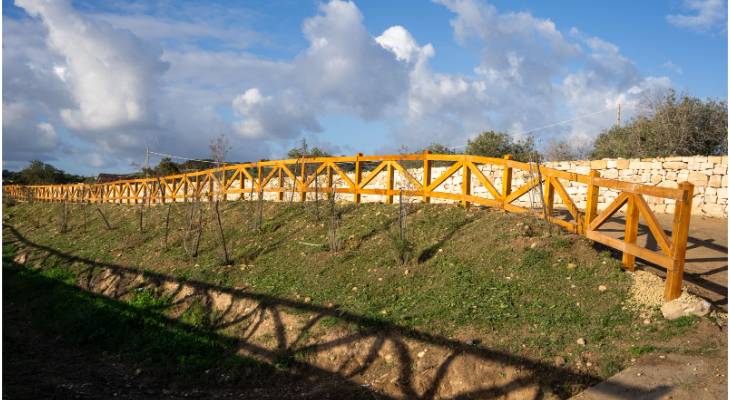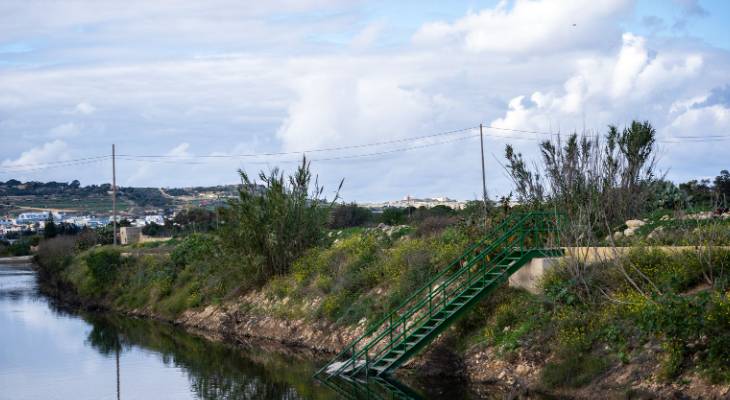Located in Burmarrad, Għajn Riħana is a picturesque valley that serves as a natural link between Ħal Mula and Wied il-Għasel. This scenic landscape, known for its lush greenery and tranquil surroundings, has long been a favourite spot for nature lovers and trekking enthusiasts.
The valley is characterised by a flowing stream, traditional water pans, and a rich maquis habitat, making it a haven for both local wildlife and visitors seeking a peaceful escape. The watercourse meanders through cultivated fields before merging with other streams and eventually reaching the sea at Salina, highlighting its importance as part of Malta’s natural water system.
Recently, Għajn Riħana has undergone extensive regeneration efforts by Project Green, aimed at restoring its ecological balance, mitigating flooding, and improving accessibility for both farmers and visitors.

This project focused on clearing the valley of waste and debris, enhancing rainwater collection, and strengthening its natural defences against erosion and environmental degradation. One of the key initiatives was the removal of invasive species and the planting of 1,400 native trees and shrubs, helping to rejuvenate the valley's biodiversity while improving its ability to retain rainwater and prevent flooding in the surrounding areas.
A major aspect of the restoration project involved an extensive cleanup operation, during which approximately three tonnes of waste were removed. The valley had suffered from years of illegal dumping, with abandoned items such as oil storage tanks, steel, concrete blocks, broken tiles, and even bathroom fixtures littering the landscape. The removal of this debris not only improved the visual appeal of Għajn Riħana but also contributed to the overall health of the ecosystem by preventing contaminants from seeping into the soil and water sources.
To further safeguard the valley’s structure, 1.2 kilometres of rubble walls were carefully rebuilt, helping to reinforce the terrain and protect against soil erosion. Additionally, new gates and wooden fences were installed, making sure that the valley remains accessible to farmers while preserving its integrity as a natural habitat.

Għajn Riħana’s diverse landscape supports a variety of plant species, each thriving in different parts of the valley. The slopes are home to hardy shrubs and Mediterranean flora, while the areas along the watercourse nurture more moisture-loving plants.
During the winter months, the valley holds a significant amount of freshwater, sustaining a vibrant ecosystem of aquatic and semi-aquatic species that are vital to Malta’s delicate biodiversity. One of the most remarkable features of the valley is the presence of deciduous trees associated with riparian woodlands, a rarity in the Maltese Islands, making this site ecologically significant.
Through these restoration efforts, Għajn Riħana has been transformed into a thriving natural sanctuary, highlighting the importance of conservation and sustainable land management. The valley now serves as a model for ecological restoration, proving that with the right care and intervention, Malta’s natural landscapes can be preserved and revitalised for future generations to enjoy.
Have you ever visited Għajn Riħana?